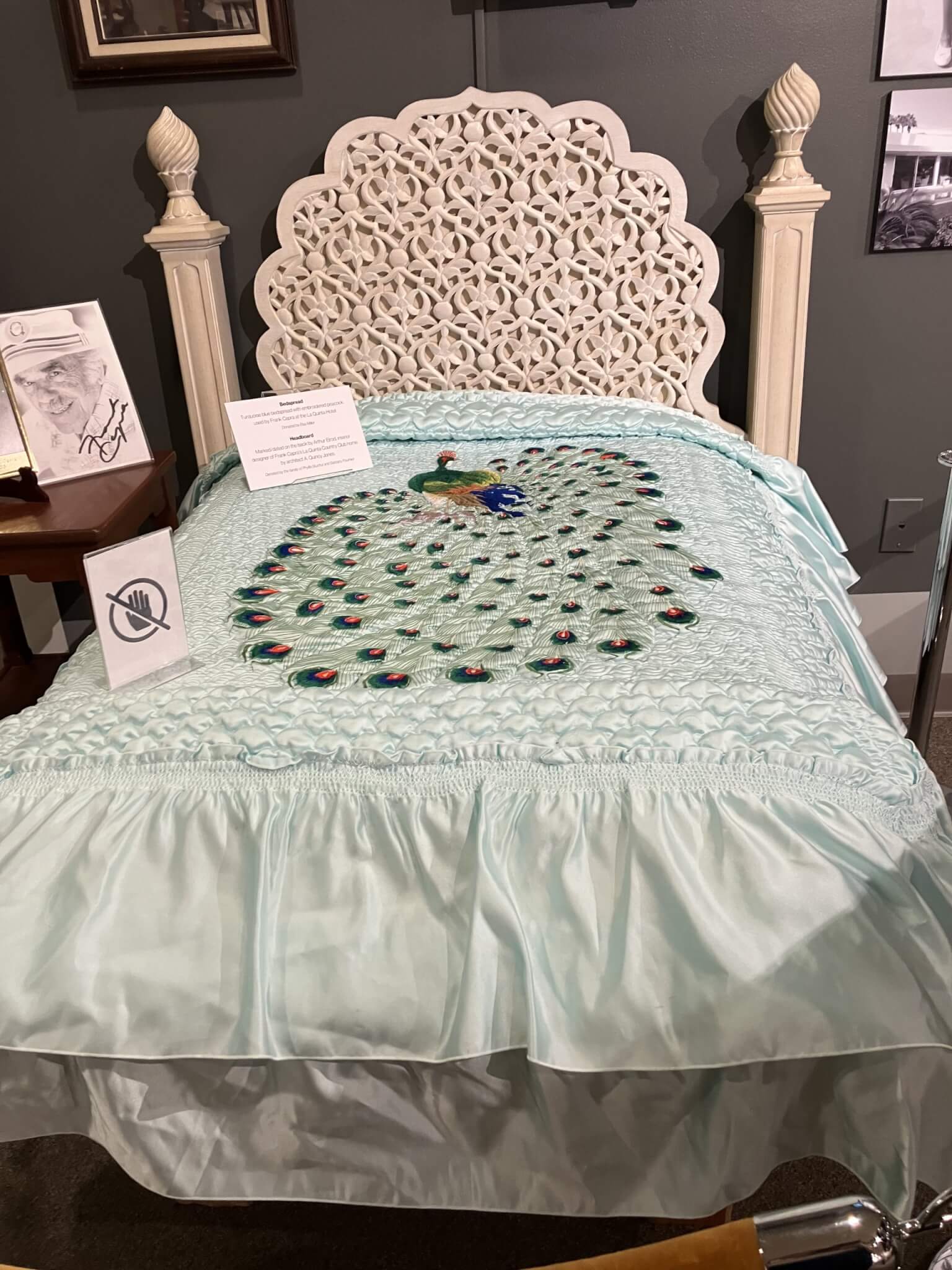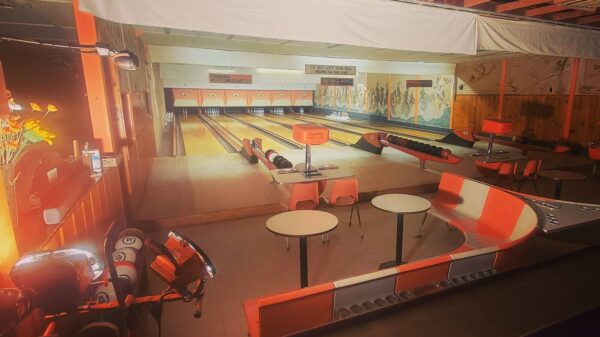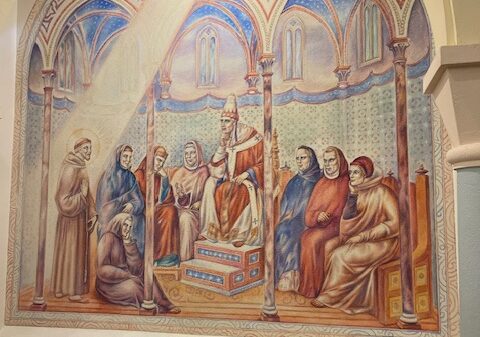La Quinta, Calif., with its breathtaking sun-draped mountains and fragrant orange blossoms, served as a muse for one of the greatest filmmakers of all time, Frank Capra.
The Academy Award winning director and screenwriter found solace and inspiration in this magical area, often referring to it as his “creative haven.”
One of the places that held a special significance for him was the iconic La Quinta Resort & Club, where he lived out his final years on the grounds of the historic hotel, the place he wrote many of his screenplays.
Capra’s love affair with the desert began in 1933 when he stayed at Nellie Coffman’s Desert Inn in Palm Springs and wrote his first major hit, Lady for a Day.
According to his autobiography, it was during his time in Palm Springs that Capra stumbled upon a short story titled “Night Bus” in a Cosmopolitan magazine, which sparked his imagination. 
He saw the potential in the story and turned it into the iconic film, “It Happened One Night”, starring Clark Gable and Claudette Colbert.
The film went on to win five Academy Awards, including Best Picture and Best Director for Capra, further solidifying his belief in the luck – and spiritual allure – of the Coachella Valley. The film is considered true north for all romantic comedies that followed.

Casita at La Quinta Resort where Capra penned “It Happened One Night.”
Capra’s love for the Coachella Valley continued to grow over the decades and he made it his final home. There’s even a 2023 must-see Capra exhibit at the La Quinta Museum.
After leaving Hollywood, Capra retired to an A. Quincy Jones-designed home at La Quinta Country Club. Yet he still found inspiration in the serene surroundings of La Quinta Resort & Club, which had become his Shangri-La for script-writing.
In his autobiography, Capra described the resort as a cool-green oasis nestled between the rocky roots of Santa Rosa Mountain.
He and his family rented a red-tiled adobe cottage, which provided the perfect space for his creative ideas to flourish. (A space you can still visit today).
With a separate sitting area, a desk with a typewriter, and a window overlooking the resort’s gentle, grassy area, Capra found the ideal environment to shape his cinematic classics such as “Mr. Smith Goes to Washington”, “You Can’t Take It With You,” and “Mr. Deeds Goes to Town.”
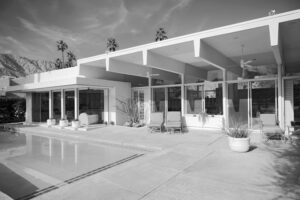
Frank Capra’s architectural home in La Quinta, which still stands today in a gated community
Capra’s connection to La Quinta Resort & Club extended beyond writing. In his old age – which lasted a long time – he became the unofficial greeter of the property (more on that later) during his full-time residency there.
While it is unknown how much of his iconic film “It’s a Wonderful Life” was penned at the resort, we do know that the film was based on a 4,000-word short story titled “The Greatest Gift” by Philip Van Doren Stern, according to Hollywood archives and articles.
Capra acquired the rights and collaborated with renowned screenwriters Frances Goodrich, Albert Hackett, Jo Swerling, and Dorothy Parker to develop the screenplay, according to Hollywood articles and archives.
Many of his films are filled with themes and plots that are close to his Catholic faith, which he cultivated here in the desert at St. Francis of Assisi church, which was designed by fellow director Franco Zeffirelli.
“It’s a Wonderful Life” has become a beloved staple of the Christmas season, drawing millions of Americans to gather in front of their TVs every December.
On the surface, the 1946 film may even seem like a religious movie. The opening scene features a flurry of disembodied prayers heard in the heavens by celestial beings, pleading for George Bailey’s well-being. However, the movie is much more than just a religious or morality tale.
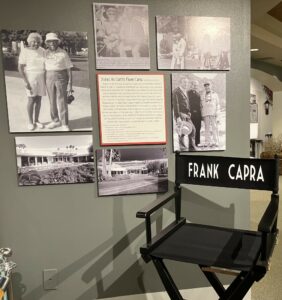
Frank Capra’s director’s chair at the La Quinta Museum as part of the Capra Exhibit
The film tells the story of George Bailey, a kindhearted small-town banker played wonderfully by Jimmy Stewart. George is falsely accused of misappropriating funds and finds himself on the brink of despair.
In his moment of desperation, he prays desperately to God for help. Little does he know that his prayer will be answered in the form of Clarence Odbody, an angel eager to earn his wings. “It’s a Wonderful Life” is celebrated for its wholesome virtues and old-fashioned American values, portraying a stereotypical small town where hard work and community play important roles.
While the movie may not be seen as steeped in religion, it actually carries a strong spiritual undercurrent. In fact, some consider it a Catholic film, as it reflects Capra’s own Catholic vision of life, one which is cultivated at St. Francis of Assisi here in La Quinta. To understand the Catholicism in the movie, it is important to know the story of Frank Capra himself.
Capra’s faith was not always strong, according to his autobiography.
Born in 1897, he described himself as a “Christmas Catholic” when he was younger.
It wasn’t until he knelt in a back pew of a cathedral, feeling lost and desperate, that he had a breakthrough in his career.
He recalled a mysterious man told him that his talents were gifts from God and should be used for God’s purpose. This revelation transformed Capra both as an artist and as a person.
Throughout his career, Capra’s movies showcased themes and plots that resonated with his Catholic beliefs.
Films like “Mr. Deeds Goes to Town,” “Mr. Smith Goes to Washington,” “You Can’t Take It With You,” and “Meet John Doe” all explored the power of goodness, faith, and love to transform individuals and communities. However, it was “It’s a Wonderful Life” that became Capra’s deepest and most artistically satisfying expression of his Catholic faith.
The movie opens with prayer, and an angel, Clarence, plays a central role in the story.
Religion is woven into the fabric of the film, with scenes of prayer on V-E Day and V-J Day. The characters in Bedford Falls attend church and find solace in their faith.
Capra doesn’t overtly wear his faith on his sleeve, but rather conveys spiritual messages through the choices, circumstances, and crises faced by his characters.
George Bailey’s desperate prayer in the movie can be seen as his “Gethsemane moment,” where he realizes his own powerlessness and finds salvation. Capra often said that the Sermon on the Mount drove his movies, and he believed that films should be a positive expression of hope, love, mercy, justice, and charity.
When “It’s a Wonderful Life” was initially released after World War II, it was a commercial and critical failure. However, it began to gain recognition and appreciation in the late 1970s when it entered the public domain. The movie’s message of God’s love, family, and community resonated with audiences, and it has since become a beloved Christmas classic.
“The (La Quinta) community quickly became his “Shangri-La,” and he and his wife, Lucille “Lou” Capra, bought a home on Avenida Fernando in La Quinta Country Club, where they lived full-time when he retired,” according to the La Quinta Museum website.
“Around 1980, they decided the house was too big for them, and the Capras asked if they could live at the La Quinta Hotel full-time. Assisted living facilities didn’t exist then, and the hotel was happy to have the Capras stay. They received three meals a day and housekeeping services,” according to the museum article.
Capra even asked the hotel staff if he could get a volunteer job as the hotel greeter, a request the hotel was happy to oblige.
“Celebrities would come to the hotel to meet with Capra, and it wasn’t uncommon to walk around a corner and see him chatting with Bette Davis, for example.”
Today, the casita where Capra wrote, called the San Anselmo, has a plaque in front honoring the filmmaker.
Inside, his typewriter sits on a desk next to a window.


